7 Best Wi-Fi Extenders for Gaming Without Lag
Eneba Hub contains affiliate links, which means we may earn a small commission if you make a purchase through them—at no extra cost to you. Learn more
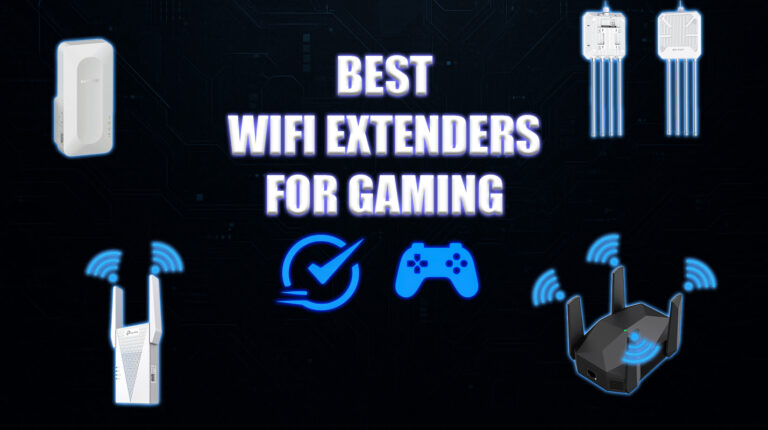
The best Wi-Fi extenders for gaming eliminate dead spots around your home without slashing your internet connection speeds. Furthermore, they don’t break the bank, costing less than what you’d have spent on an extensive mesh network or new router.
However, most manufacturers throw a lot of buzzwords at buyers today. That’s why I’ve personally reviewed the best gaming Wi-Fi signal boosters and cross-checked with other gamers to solidify these options. You can’t go wrong with any of the picks on this list.
Jump to:
Our Top Picks for Wi-Fi Extenders for Gaming
Eliminate network dead zones, share wired connections wirelessly, and get the most out of your fast internet connections with my top Wi-Fi extender picks:
- TP-Link RE715X AX3000 – Get this easy-to-set-up Wi-Fi range booster to improve online gaming speeds and reduce ping across large spaces.
- TP-Link AC1200 (RE315) – The ideal Wi-Fi range extender with decent speeds for single or a couple of users, and at the best price!
- Wavlink 573HX3 – The best gaming WiFi booster for outdoor gaming and ultra-wide angle coverage.
Offering varying network range capacities, these excellent Wi-Fi range extenders will get the job done for you. If you’d like to consider extra features before buying, such as mesh system support, I suggest reading the rest of my reviews and comparisons to the end.
7 Best Wi-Fi Extenders for Gaming Roundup
Want to extend your ultra-fast gaming connections from your ISP setup location to your gaming areas? Here are the best Wi-Fi extenders to use.
1. TP-Link RE715X AX3000 [Best Overall Wi-Fi Extender for Gaming]
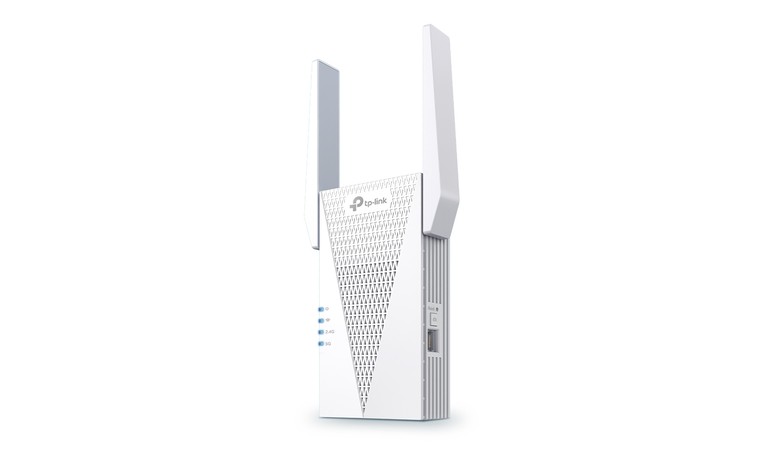
| Specs | Details |
|---|---|
| Bands | 2.4 GHz + 5 GHz |
| Speed | Up to 2976 Mbps |
| Access Point | Yes |
| Range | N/A |
| Wi-Fi 6 | Yes |
The TP-Link RE715X AX3000 is a lightweight and easy-to-use Wi-Fi range extender. If you live in a two-story building or want to extend your Wi-Fi coverage to horizontal network dead zones in your home, this is the right pick.
One of the tests on this extender saw a 40 – 50 Mbps download speed boost on an 100 Mbps network across floors after installation. Honestly, when I saw my upstairs room hitting full speeds, I couldn’t stop grinning. This might be the difference between a fast or slightly slower flick in competitive first-person shooter games like Valorant and CS:2.
If you’ve always been concerned about the naturally short range on your 5 GHz network, this unit’s 2.4GHz band ensures longer-range connectivity.
I recommend this model to all FPS gamers because the latency was rock solid for me, even with a full house streaming Netflix downstairs
But what about the setup? I found that to be an absolute breeze. You get three setup options – a WPS button, the TP-Link Tether app, or via a web browser. I prefer the app setup, which makes it easier to keep things organized, especially if you already have a mesh setup.
Finally, I appreciate the built-in access point. That allows you to maintain wired connections to your gaming devices via ethernet cables. So, you can connect directly to get impressive wired speeds.
Alternatively, you can connect the Wi-Fi range extender to your wired ISP’s access point to broadcast that ultra-fast internet everywhere. Simply lovely!
| Pros | Cons |
|---|---|
| ✅Supports 2.4GHz and 5GHz network bands ✅Extends Wi-Fi connection by up to 2800 square feet ✅Compatible with Amazon Alexa and Google Assistant for smart home integrations ✅Easy to set up with three intuitive setup methods ✅Optimizes for the right position with a signal-focused LED ✅Compatible with Wi-Fi 6 technology ✅Built-in access point mode for faster internet via wired connections | ❌Doesn’t ship with an Ethernet cable |
Final Verdict: The TP-Link RE715X AX3000 is an ideal purchase for gamers who live in a multistory building or those who would like to extend a multi-gig ISP internet connection to the rest of the home.
2. TP-Link AC1200 (RE315) [Best Budget Wi-Fi Extender for Gaming]
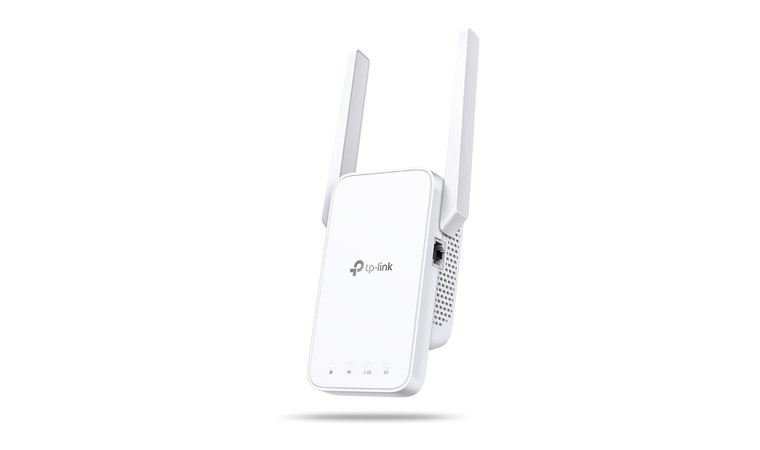
| Specs | Details |
|---|---|
| Bands | 2.4GHz + 5GHz |
| Speed | Up to 1200 Mbps |
| Access Point | Yes |
| Range | 1500 sq. ft. |
| Wi-Fi 6 | No |
There are only a few gaming Wi-Fi extenders cheaper than the TP-Link AC1200 (RE315), and even at that, they might not be as good. Thus, making it a solid all-around option for gamers who don’t want to spend too much on a Wi-Fi booster. Frankly, I couldn’t believe the performance I got from this affordable model. I came in expecting mediocre results at best, and it really surprised me.
To start with, it’s similar to the TP-Link RE715X AX3000 in antenna configuration, LED lights, and inclusion of one gigabit Ethernet port. You can also set up the TP-Link AC1200 (RE315) in Access Point Mode to transform your faster wired connection into a wireless network.
That said, though, there are some differences. For instance, the TP-Link AC1200 (RE315) only supports between 1200-1500 square foot range, lower than the TP-Link RE715X AX3000, but enough for a single-floor home.
TP-Link chose to cut costs on this unit by not including an Ethernet cable. I don’t mind this, given that most of us already have one or more Ethernet cables lying around, anyway.
Speaking of, this model supports 10/100Mbps Ethernet connection. This means some of your devices may get only 10 Mbps on a wired connection. This was a bit frustrating, but, fortunately, the 5 GHz band supports a link rate up to 867 Mbps.
If your internet plan exceeds 100 Mbps, don’t rely on the RE315’s Ethernet port. Iit’ll cap your speeds. Sticking to the 5 GHz wireless band often delivers faster real-world performance than a 10/100 wired connection.
Finally, I like that this Wi-Fi range booster is easy to use and set up. You can choose the website or WPS setup options, but I prefer the simplicity of the TP-Link Tether app setup.
| Pros | Cons |
|---|---|
| ✅Inexpensive yet effective Wi-Fi range extender ✅Extends Wi-Fi over 1200-1500 square feet ✅Seamlessly integrates into an existing mesh network for extended coverage ✅Extends 2.4Ghz and 5Ghz network bands ✅Easy to set up, even for non-tech-savvy users ✅Access point mode to deliver wired connections over wireless ✅Up to 4x network boost to internet dead spots | ❌No Ethernet cable in the box |
Final Verdict: The TP-Link AC1200 (RE315) is a highly inexpensive yet effective Wi-Fi range extender for gamers, homes, and families living on a single floor and not connecting a lot of devices.
3. Ingabis AX3000 [Best Wi-Fi Extender for Xfinity]
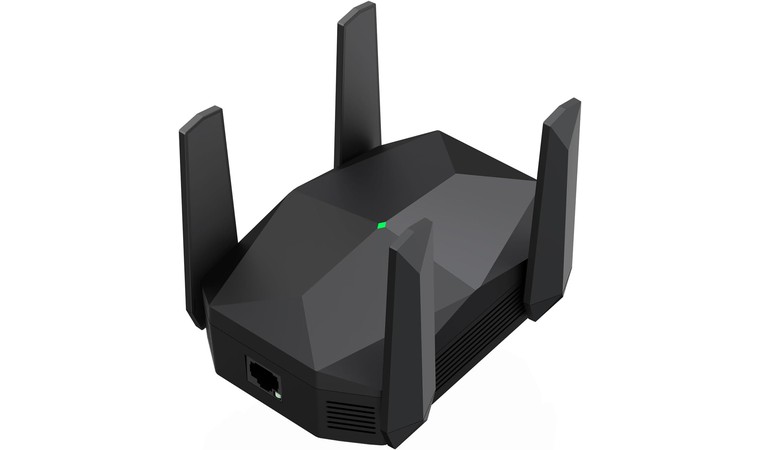
| Specs | Details |
|---|---|
| Bands | 2.4GHz + 5GHz |
| Speed | Up to 3000 Mbps |
| Access Point | Yes |
| Range | 13,000+ sq. ft. |
| Wi-Fi 6 | Yes |
For a change, the Ingabis AX3000 brings on four external antennas. That promises you an even better coverage, which is advertised at 13,000 square feet. In my experience, you won’t get such a long range – but the gaming WiFi booster will surely give you coverage over a distance.
I’m pleased with the added Wi-Fi 6 compatibility. While you don’t get the extra 6 GHz network band, you’ll get faster internet connections across the existing 2.4 GHz and 5 GHz bands.
But what makes it the best Wi-Fi extender for Xfinity?
Thanks to an ethernet access point, you can convert your wired Xfinity network into a wireless connection with this extender. That works for brick houses and buildings where you just can’t tear up walls to run wired connections everywhere.
If you’re pairing this with an Xfinity gateway, set it to use a custom SSID rather than “_EXT.” That way your gaming PC or phone doesn’t keep switching mid-match and dropping frames. A simple rename keeps the extender behaving like a seamless addition, not a separate network.
It’s also a one-time purchase, rather than requiring being locked to an Xfinity contract. On top of that, the Ingabis AX3000 works with all networks. Therefore, it doesn’t become useless if you ever decide to move away from Xfinity.
However, I got frustrated out of my mind when I had to set it up from scratch every time my Wi-Fi dropped. Still, looking back at it, it was a small price to pay for such performance.
Furthermore, it doesn’t use as many intuitive LED lights as the TP-Link models. Still, it’s an easy Wi-Fi repeater to set up and figure out.
| Pros | Cons |
|---|---|
| ✅Four external antennas to boost Wi-Fi coverage ✅Gigabit Ethernet port for wired connections and access point setups ✅Wi-Fi 6 compatibility across 2.4 GHz and 5 GHz bands ✅Connects up to 100 devices ✅Easy to set up via a dedicated app ✅Works with other ISPs, unlike Xfinity’s pods | ❌Requires reinstallation after Wi-Fi blackouts |
Final Verdict: Ingabis AX3000 is ideal for gamers, remote workers, and other Wi-Fi users with a large space needing extensive coverage over an Xfinity network.
4. NETGEAR AX1800 (EAX15) [Best NETGEAR Mesh-Ready Wi-Fi Extender for Gaming]
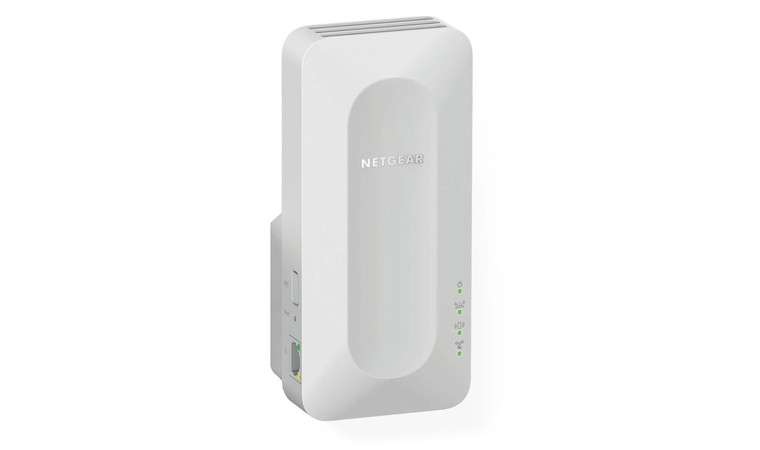
| Specs | Details |
|---|---|
| Bands | 2.4 GHz + 5 GHz |
| Speed | Up to 1800 Mbps |
| Access Point | Yes |
| Range | 1500 sq. ft. |
| Wi-Fi 6 | Yes |
The Wi-Fi 6 support on this NETGEAR AX1800 (EAX15) makes it an ideal choice for gaming, video streaming, 4K content lovers, and videoconferencing. I tested it in a basement with the main router on the first floor, and was impressed how smooth my late-night CS:GO sessions were.
Furthermore, you can seamlessly pair this Wi-Fi range extender with your Wi-Fi 6-capable router and be sure to get the same network quality. However, there’s no 6 GHz band. That’s not a huge dealbreaker, but I’d add it to manage expectations.
For the smoothest gaming experience, place the EAX15 at about midway between your router and your farthest gaming device. This position gave me full speeds without drops, even with walls in between.
Fortunately, Netgear doesn’t cheapen out on access point mode support, which you can enjoy in two ways:
On the one hand, you can connect it to your router via an Ethernet cable to broadcast your wired network for wireless connection. Alternatively, you can plug it into any of the internet access points in your home to extend your internet wirelessly.
Neatgear configured a Nighthawk app to make this device’s setup easier. You can also choose the web browser route, but I’ve found that to be more daunting.
Finally, know that this extender comes mesh Wi-Fi system ready. You don’t need to already have a Netgear router to use it, either. As long as your existing router supports WPS pairing and connection modes, you’re good to go.
| Pros | Cons |
|---|---|
| ✅Supports Wi-Fi 6 for faster network speeds ✅Access point to share wired networks over wireless connections ✅Offers 2-3x faster speeds than the base router for dead zones ✅Easy to set up via the Nighthawk app ✅Repeats fast enough network for low-ping gaming and fast content streaming | ❌LED lights aren’t as intuitive as TP-Link’s |
Final Verdict: The NETGEAR AX1800 (EAX15) slots nicely into an existing mesh setup and can help you start your first mesh network. It’s also a decent gaming WiFi booster with access point setup-enabled.
5. D-Link E30 AX3000 [Best D-Link Wi-Fi Extender for Gaming]
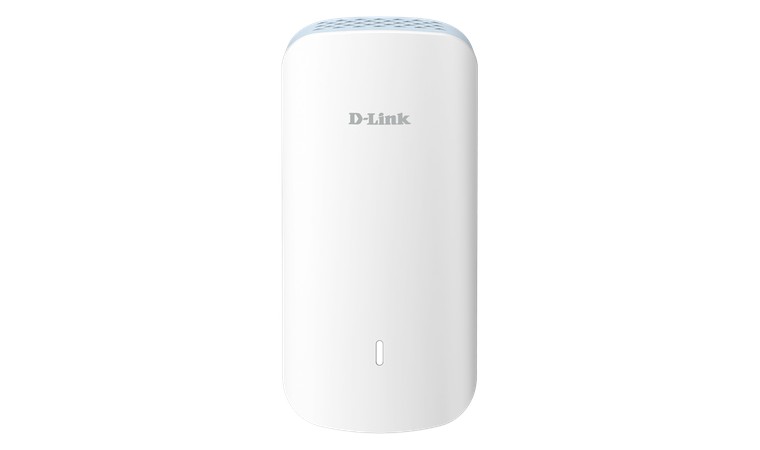
| Specs | Details |
|---|---|
| Bands | 2.4 GHz + 5 GHz |
| Speed | Up to 1800 Mbps |
| Access Point | Yes |
| Range | 1500 sq. ft. |
| Wi-Fi 6 | Yes |
Do you have faster internet in other parts of your home than near your gaming setup? This D-Link E30 AX3000 does a decent job of translating speeds from a fast access point to wherever you need it.
Testing in a chaotic two-story office with active PCs, gaming consoles, and streaming devices, I honestly didn’t expect it to hold up as well as it did. It felt like a small miracle watching my Valorant ping nailed under 20ms.
Of course, you may not get the exact speeds as your router on this unit. That’s the same for every other gaming WiFi booster. Still, D-Link E30 AX3000 holds on to the best connection possible.
I believe this is due to its extra 5 GHz band antenna. Knowing that the 5 GHz band has a shorter travel distance, having an extra antenna improves connection speed and range. So, you don’t have to worry about your gaming devices switching to the slower and more congested 2.4GHz band too often.
Place the E30 AX3000 about halfway between your main router and the dead zone. In my tests, this gave the 5 GHz band the best balance of speed and coverage. Too close to the router, and the extra antenna doesn’t help; too far, and the signal drops too much.
The access point cutout on this model is quite convenient. You can now broadcast your wired internet wirelessly or connect an office phone if you’re too far from the main access point.
Furthermore, I like that D-Link throws an ethernet cable in the box. That saves you one extra purchase, especially if you need to quickly set up the access point and don’t have a free Ethernet cable.
| Pros | Cons |
|---|---|
| ✅Access point mode to extend wired networks ✅Comes with an Ethernet cable ✅Easy to set up via the dedicated D-Link app ✅Wi-Fi 6 supports broadcasting at faster speeds from compatible routers ✅Extra 5 GHz antenna to improve performance and boost range ✅Compatible with all routers, not only D-Link models ✅Mesh roaming support for seamless and continuous connectivity around your space | ❌Just one LED light |
Final Verdict: D-Link E30 AX3000 is a consumer-friendly, fast, easy-to-set-up, and inexpensive Wi-Fi range booster for home gaming setups or office productivity.
6. Wavlink 573HX3 [Best Outdoor Wi-Fi Extender for Gaming]
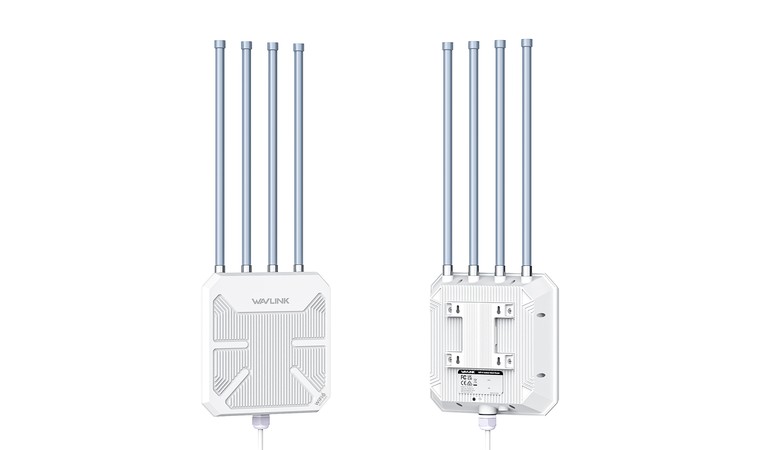
| Specs | Details |
|---|---|
| Bands | 2.4 GHz + 5 GHz |
| Speed | Up to 3000 Mbps |
| Access Point | Yes |
| Range | 300 metres |
| Wi-Fi 6 | Yes |
The Wavlink 573HX3 is the most impressive outdoor Wi-Fi extender I’ve ever seen – and by a mile! I’ve never seen any other gaming Wi-Fi booster keep its kind of performance over long outdoor ranges.
This makes it fantastic for gamers who have their special gaming shed outdoors. The best part is that you get almost as low a ping as on your router itself. This makes connecting to the Wi-Fi range booster ideal for fast-paced games or titles with high refresh rates.
If you plan to use this for long-range outdoor gaming, aim the four antennas in slightly different directions. I got noticeably better coverage and fewer dead spots that way.
One other thing I love about the Wavlink 573HX3 is its multiple setup modes. While it doesn’t have a mobile app, you can set it up as a mesh router, mesh extender, in access point mode, or just as a Wi-Fi repeater. In my experience, it’s best to set this up in access point mode to get the best connectivity.
Overall, the Wavlink 573HX3 requires a bit of manual setup. So, it’s not the usual plug-and-play like the others. Even so, that’s a small sacrifice for the sheer outdoor speeds that this unit brings to the table.
| Pros | Cons |
|---|---|
| ✅Ships with an Ethernet port to help with initial setup and connection ✅Wi-Fi 6 compatible over 2.4GHz and 5GHz bands ✅Multiple outdoor mounting options ✅IP67 water resistance on the main frame ✅Four extra-long antennas for improved Wi-Fi network coverage ✅Box contains tools (screws, wrench, etc.) needed for full installation ✅Four setup modes to take full advantage of your internet connection ✅Multiple outdoor mounting modes for user convenience | ❌Requires a bit of an extensive setup |
Final Verdict: You won’t find a better outdoor Wi-Fi gaming extender than the Wavlink 573HX3. Great for gamers who love to spend time outdoors.
7. ASUS RP-AX58 [Most ASUS Wi-Fi Extender for Gaming]
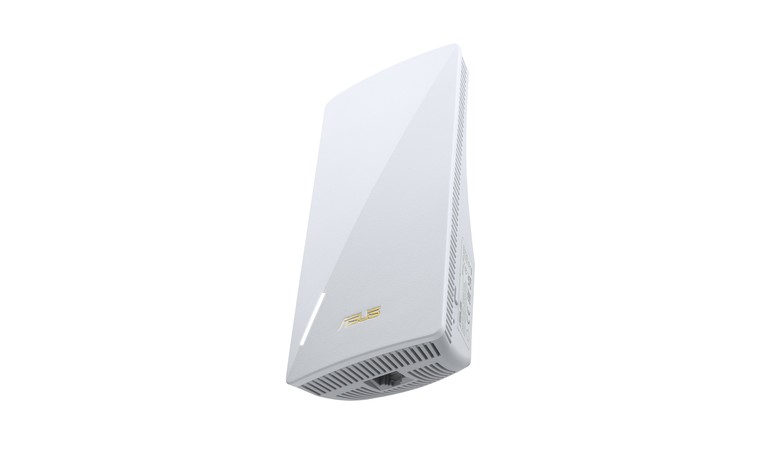
| Specs | Details |
|---|---|
| Bands | 2.4 GHz + 5 GHz |
| Speed | Up to 3000 Mbps |
| Access Point | Yes |
| Range | 2200 sq. ft. |
| Wi-Fi 6 | Yes |
The ASUS RP-AX58 holds a lot of promise for your conventional in-house gaming setup. Alternatively, you can use it in a public space, such as a dormitory, to get better gaming speed from the main connection port to your room.
No matter how you deploy this extender, you should be getting a minimum of 2x the initial network speed you had in the network dead zone.
I recommend this even more for users with an existing ASUS router. It works well with other routers, but its seamless AIMesh connection will only work with other ASUS routers. I have to admit, I got frustrated at first trying to figure out why the AIMesh setup didn’t auto-connect with my non-ASUS router. I wasted a solid 20 minutes thinking something was broken.
I only recommend this extender if you’re fully in the ASUS ecosystem or plan on getting there in the near future.
If you don’t have an ASUS router, you can still connect via the extender or AP mode. Access point connections are my favorite since they transmit the fastest speed.
Unlike the TP-Link Wi-Fi boosters, this ASUS RP-AX58 uses just one LED light interface, indicating power (white) and and connection status (blue). I prefer the TP-Link approach, which indicates Wi-Fi power, signal strength, and dual-band connection availability.
Overall, ASUS’s introduction of Trend Micro’s security suite to this device is a welcome addition. Gamers like me would love the added security, especially since most Wi-Fi repeaters don’t bother about having extra security.
| Pros | Cons |
|---|---|
| ✅Compatible with Wi-Fi 6 routers ✅Access point mode and mesh network connection for flexibility ✅Compatible with other routers in AP mode to extend Wi-Fi range ✅Easy-to-use app for fast setup ✅Improved network security via Trend Micro solutions ✅Delivers fast speeds over a reasonable distance | ❌Mesh technology works better with ASUS routers only |
Final Verdict: I recommend the ASUS RP-AX58 for existing ASUS users as they can get the best out of its numerous setup options.
What To Look for in a Wi-Fi Extender?
The best gaming WiFi booster for your existing home network would depend on the range you need, how many devices you want to cover, and your preferred setup method. You might also have to consider your existing routers, as some Wi-Fi extenders work best with certain brands than others.
In short, here’s how I select the right Wi-Fi extender for any network.
Compatibility With Your Router
Only buy a Wi-Fi extender that’ll work well with your gaming router. For example, a gaming Wi-Fi extender without Wi-Fi 6 support won’t get you the best internet speeds from your Wi-Fi 6 router. Likewise, not all Wi-Fi boosters support mesh network setups, which you might need later on.
The Right Wi-Fi Bands
There are three common Wi-Fi bands to care about – 2.4GHz, 5GHz, and 6GHz. The majority of gaming Wi-Fi extenders today only support the first two bands, and that’s fine. But what makes them different?
| Band/Criteria | 2.4GHz | 5GHz |
|---|---|---|
| Speed | Good | Ultra-fast |
| Range | Higher | Lower |
| Congestion | Higher | Lower |
| Performance | Good | Best |
| Compatibility | High | Medium |
All Wi-Fi-enabled devices support the 2.4 GHz band. This means that once your Wi-Fi network is on, smart home devices (like smart TVs), phones, and laptops start competing to get on the 2.4GHz band. This makes it highly congested, reducing network speed.
The 5GHz band is relatively newer and only features on modern and high-end devices. Thus, offering faster speeds. So, you need an extender with both bands, at least. That way, you can connect other devices to the 2.4GHz network while leaving your gaming devices on the 5GHz band.
Speed and Throughput
You don’t just want extended coverage, but fast connections. Most people will tell you that Wi-Fi extenders cut your existing network speed in half or less than half. However, I can confirm that you can get similar network speeds as your main router with the right Wi-Fi extender. Most times, this happens in the AP connection mode.
Still, not all Wi-Fi range extenders can offer all the speeds coming from your network provider. A neat trick is to look at the numbers behind the “AX” or “AC” tag used on the product marketing. This usually indicates the maximum speed that the product can transmit.
Manufacturers won’t tell you this, but the advertised speeds are added up across all available bands. So, an AX3000 model will support a maximum of 3000Mbps across both 2.4GHz and 5GHz, not over each one. Thankfully, more than two-thirds of the speed is usually reserved for the 5 GHz band.
Coverage Area
The advertised coverage area is often in an open-space setting. This means the range is reduced drastically in a normal home setting with walls and floors.
With this in mind, you can have more realistic expectations of the extender and choose a unit with a bigger coverage area. I’ve indicated the open-space coverage area of all units I reviewed above.
Ports
I never recommend a Wi-Fi extender without an Ethernet port, due to its sheer functionality.
With such a port, you can connect your Wi-Fi extender to your game consoles or PC for faster speeds. This dampens network losses and ensures you’re getting the maximum speed output from the extender.
Likewise, a port makes it possible to transform the Wi-Fi extender into a network access point. In other words, you get to turn your ISP’s wired connection into a wireless one. That works best for devices like your smartphones, cameras, and other smart units that can’t natively use a wired connection.
Ease of Setup and Management
Always consider how easy a Wi-Fi extender is to set up. You don’t want to accidentally break your existing Wi-Fi or network setup while trying to get the extender to work.
I look for multiple setup models – a combination of phone app, web app, and QR code setup. That way, I know there are alternatives if one fails or is too technical.
Security
Cheap Wi-Fi range boosters may not offer good security. Hence, leaving your network vulnerable to hackers and intruders.
This is why I’m always partial to Wi-Fi range extenders supporting WPA3 security, at least. That way, I can rest assured they’re not introducing a weak link into my home security system.
FAQs
What is the best Wi-Fi extender for gaming?
The best Wi-Fi extender for gaming depends on your coverage needs, existing router type, required speeds, and preferred connection models. The TP-Link RE715X AX3000 is an excellent gaming Wi-Fi extender with impressive multi-floor coverage range, ultra-fast speeds, and access point connection support to maximize wired connections.
How does a Wi-Fi extender work?
A Wi-Fi extender connects to your main router network, then extends or boosts the signal to areas with a network dead spot. In other words, it removes the need to buy another router for areas where your original network connection doesn’t reach. Hence, you can keep using the same network across a larger space without subscribing to another ISP plan.
How to set up NETGEAR Wi-Fi extender?
The best way to set up a Netgear Wi-Fi extender is via the dedicated Nighthawk app. The app seamlessly connects to the Wi-Fi extender and leads you through the exact steps to complete the setup.
Where is the ideal location to place a Wi-Fi extender?
The best location for your Wi-Fi extender is halfway between the main router and the area with a network dead zone. Such a central location ensures the Wi-Fi extender gets the best possible connection from the main router and can boost that to other areas of your space.
This might not work in an extensive space where the halfway point is too far from the router. In this case, use a mesh system of Wi-Fi extenders.
How to connect a Wi-Fi extender to a router?
You can connect a Wi-Fi extender to a router wirelessly or via a wired connection. The ideal method will depend on how far away from the router the extender needs to be and whether you’re using it in access point mode.
What is the difference between a Wi-Fi extender and a booster?
Wi-Fi extenders are the same as Wi-Fi boosters. They both take your initial internet connection from a router or a wired source and boost it to other areas where there might be low connectivity or network dead spots. Wi-Fi extenders can also be referred to as Wi-Fi range boosters or Wi-Fi range extenders.

















